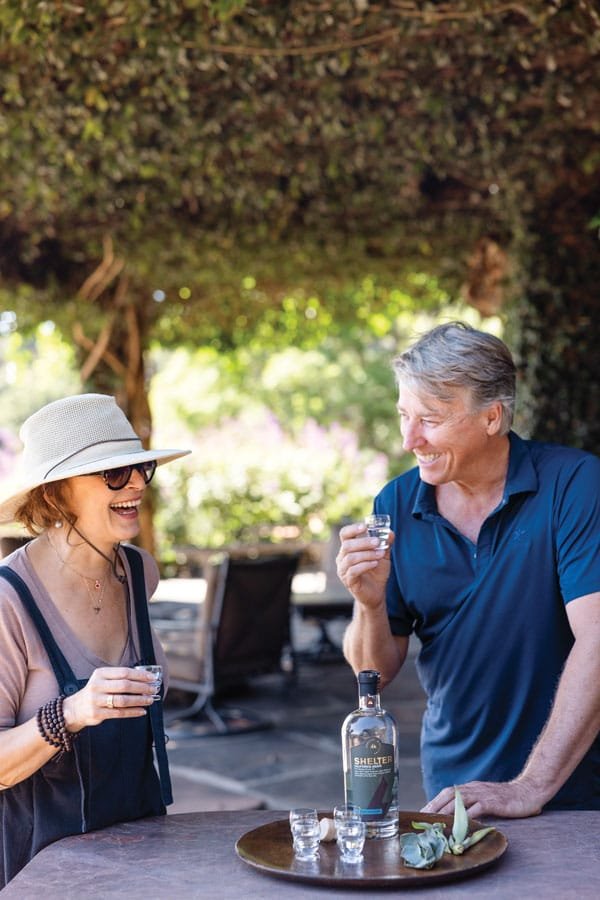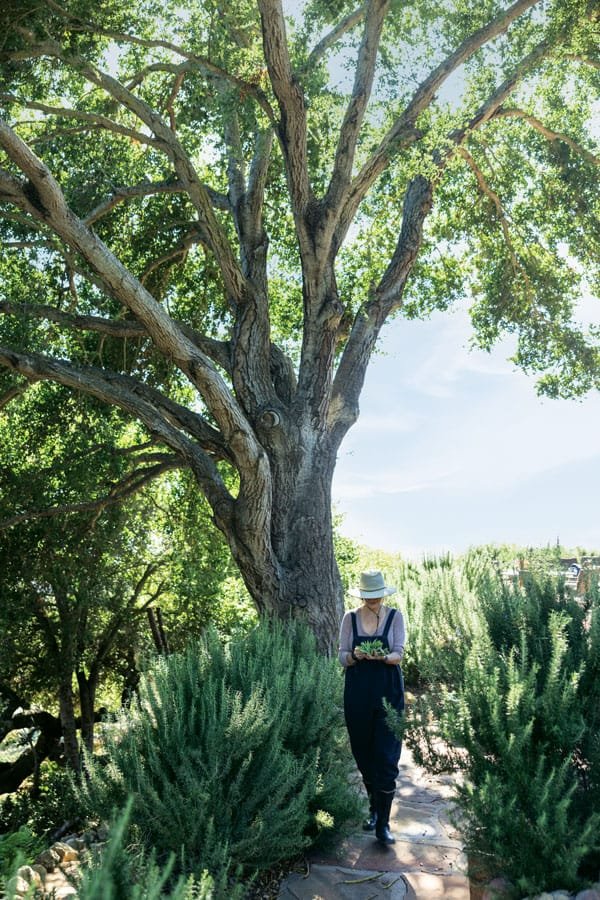California Spirits
On a former avocado ranch, RANCHO DEL SOL is the beginning of a Montecito agave legacy
Written by Caitlin White | Photographs by Michael Haber
“We grow in an unconventional way. We don’t have regular irrigation. After the plants are established, we simply let them be.”
Rancho del Sol, the 11-acre agave ranch in Montecito where husband-and-wife duo Ane Diaz and Mark Peterson live and work, wasn’t always home to the spiky plants that are the source of distilled spirits like mezcal and tequila. Formerly the place was an avocado ranch, until fires and mudslides got the couple thinking about alternative crops. “It was Mark’s father, Dave Peterson, who shared an article about growing agaves in California,” Diaz explains. “The article mentioned that agaves need little water and can help slow down and, in some cases, even stop fires. We were hooked. Even though we don’t have a background in spirits, both of us have been bartenders.”
The couple “met cute” in Minneapolis, where Peterson was working as the manager of the iconic Loring Bar. Diaz happened to be in the Twin Cities for a conference, and a friend suggested visiting the Loring. The pair quickly hit it off. A few days later Peterson became Diaz’s tour guide around the city, and the rest is history. These days they work as partners farming agave, with each playing to their strengths.
“Our approach is divide and conquer,” says Peterson. “Ane likes to research and study, and she is involved with the younger plants. I tend to learn from experimentation. I work with the larger plants and the layout of the property. We have a family joke: I’m ‘nature,’ and Ane is ‘nurture.’”
“In Rancho del Sol we grow in an untraditional way,” says Diaz. “We call it semi-salvaje—semi-wild. That means we don’t have regular irrigation. After the plants are established, we simply let them be. Even though the agave plant has been growing in California for a very long time, the challenge in this area is growing plants to mature size. Gophers and ground squirrels can decimate a mature crop, and for the very young plants we’ve found deer and snails like to nibble on them. Also, the cold winters can kill or at least slow down the growth.”
Growing their agave crop led the couple to appreciate the plant for all its by-products and to dream of eventually distilling it, an idea that seemed far-fetched until another chance meeting—this time with Patricia Swenson, the executive chairman of Shelter Distilling—led to a partnership between neighbors.
“My husband and I walk in our neighborhood every morning,” Swenson says, “and over a period of months in 2019 we watched Mark Peterson move earth, rocks, and hundreds of agave plants around his property, driving the heavy equipment himself. One day we asked him about his passion for agave, and he shared his dream. We informed him that we had a distillery in Mammoth Lakes, and that was the beginning of our creative partnership.”
“The distillate from agaves made in the U.S. can’t be called mezcal because of its protected designation under the denomination of origin,” Diaz says. “Mezcal can only be made in eight Mexican states, tequila in five Mexican states, so we’re calling our output agave spirits. The distilling process has been at the hands of Jason Senior and Marcos Magdalano at Shelter Distilling. We couldn’t be happier with their results.”
Diaz and Peterson choose the different agave varietals that will go into an ensemble, or mix, selecting agave species based on the potential sugars needed to make the spirits. “Every spring and fall we choose which plants will be distilled,” adds Diaz. “As the agaves start to bloom, we either allow them to flower to seeds or bulbils [secondary plants]. Or, if we decide to make the spirit, the flower will be cut to quiote [stalks] and left in the ground for six to ten months before harvesting for Shelter Distilling to process.”
To describe their sold-out batch of Rancho del Sol Agave Spirit, which was distilled from a blend of five varietals—Agave americana, A. potatorum (tobala), A. salmiana, A. parryi, and A. tequilana—Shelter notes “stone fruit, floral, and peppery smoke.” Plans are currently in the works for a third batch of agave spirits from Rancho del Sol, which recently completed its fall harvest. Says Diaz, “This time we’re doing americana, salmiana, tobala, mapisaga, tequilana, and desmetiana—and we’re very excited.”









